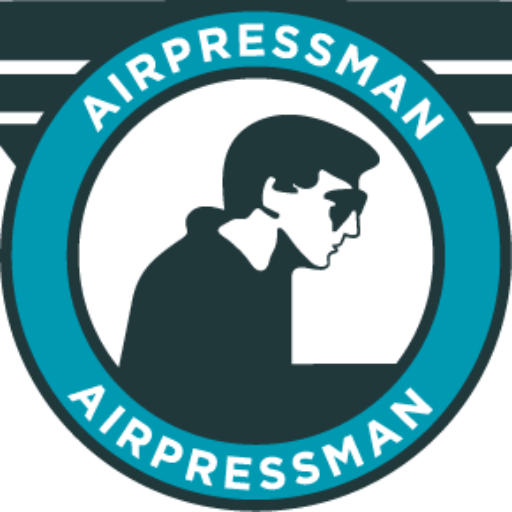
FMA IA-58A PUCARÁ
FUERZA AÉREA URUGUAYA (FAU) – ESCUADRÓN AÉREO N0. 1 (ATAQUE)
The official retirement from service of the FMA IA-58A Pucará operated by the Fuerza Aérea Uruguaya (FAU – Uruguayan Air Force) occurred on March 17, 2017. Here Airpressman publishes a description written during the operational years of the fleet, describing the Pucará utilization in its 36 year service alongside this south american small air arm.


Uruguay introduced the FMA IA-58A Pucará in June 1981. FMA stands for Fabrica Militar de Aviones (Military Airplane Factory) created in 1927 and then from 1995 until 2009 under US control as LMAASA – Lockheed Martin Aircraft Argentina SA and presently, as the state owned Fábrica Argentina de Aviones “Brigadier San Martín” S.A. The Fuerza Aérea Uruguaya – FAU (Uruguayan Air Force) elected the large argentine built, twin turboprop attack aircraft to join their armed North American T-6 Texan, that alongside a fleet of Beechcraft T-34A/B Mentor, equipped a ground attack and advanced training unit called Grupo de Aviación No.1 – Instrucción y Entrenamiento (Aviation Group no.1 – Instruction & Training) based at the Brigada Aérea No. 2 (Air Brigade No. 2) Tte. 2do. Mario Walter Parallada Air Base near the city of Durazno in the centre of the nation, 91 miles (188 km) north of the capital Montevideo.

With the arrival of the strike type – designated A-58 – Grupo 1 was restructured purely as an attack squadron and renamed Escuadrón Aéreo No.1 (Ataque) EA1 (Air Squadron No. 1 – Attack) maintaining the Texans until 1993. The unarmed Mentors moved to the CIEVA – Centro de Instrucción y Entrenamiento de Vuelo Avanzado (Advanced Flying Training and Instruction Centre) created on December 22, 1981 to be replaced in 1992 by six Swiss built Pilatus PC-7U turbo trainers with air-to-ground attack capabilities to prepare newly qualified pilots and navigators into combat aircrews. The CIEVA then became EVA – Escuadrón de Vuelo Avanzado (Advanced Flying Squadron) on August 15, 1995.
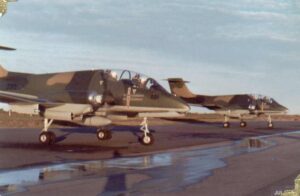
Named after a type of argentine Quechuan Indian fortress, the Pucara was conceived in the late sixties as a COIN (Counter-insurgency) STOL (Short Take Off & Landing) aircraft for a light intensity, low threat conflict. It is agile and maneuverable at low speeds and altitudes as well as a steady gun platform capable of carrying a heavy weapons load and variety. With no threat sensors fitted, this old technology aircraft depends for its survival on its ability to mask itself close to the ground, crew survivability is increased by an armored windscreen and floor area and a British built Martin Baker MK 8006 A zero-zero ejection seat.
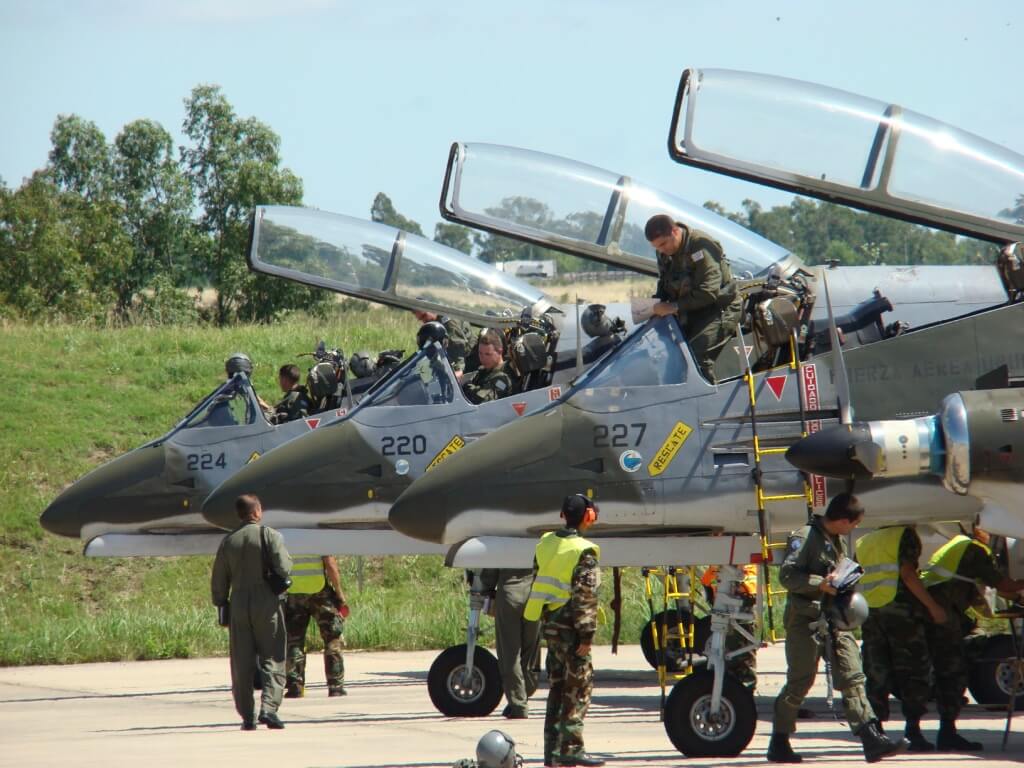
DRUG BUSTER
Uruguay utilizes its Pucará for Close Air Support (CAS) day and night ground attack/strike missions, ground, maritime, river and border patrol and is apt as a helicopter killer (utilized as such by Argentina during the Falklands/Malvinas War but not practiced by the FAU) and the ideal platform for interception of low performance, drug trafficking aircraft which are increasingly operating in the region. With this latter threat in mind, Uruguay’s Government spent U$ 25 million on two latest technology Spanish built INDRA Lanza 3D radars.

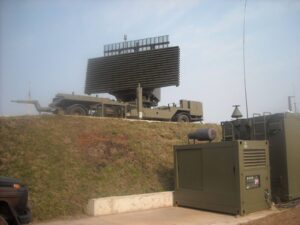
A fixed one has been operational by mid 2008, with a mobile platform in service since 2009. With coverage of 220 nm (400 km) the whole of the country’s airspace is monitored. The Pucará plays an important role in this policing task being able to deploy at short notice and with minimum support to unprepared fields adjacent to presumed air routes frequented by clandestine flights. From these fields the aircraft will launch to intercept and force them to land if deemed necessary. The Pucará is the only aircraft, in the FAU inventory, suitable for this job. (To see how FAU jets operate out of highways, check this link: A-37B ROAD DEPLOYMENT: “Highwaymen”

The production line was manufacturing 108 aircraft for the Argentine AF (Fuerza Aérea Argentina – FAA) and a deal was signed for six aircraft on November 12, 1980 (and an option for two, never exercised). The new aircraft were from the third and fourth production batches destined to the FAA, thus the fleet bears FAA tail numbers as well as FMA’s construction numbers.The first two aircraft FAU 220 (c/n 043, FAA A-542) and FAU 221 (c/n 047 FAA A-546) were flown in from the Cordoba factory to Durazno by FAU pilots on June 2, 1981. Full strength of six aircraft was achieved with the arrival of FAU 225 (c/n 049 FAA A-548) on October 8, 1981. Unfortunately this aircraft was lost on a fatal accident July 22, 1993 during a practice ground attack sortie on adverse meteorological conditions. In the previous year before arrival of the Pucará, the FAU moved from Montevideo the Grupo de Aviación no. 2 (Caza) (Aviation Group no. 2 – Fighters) with their Lockheed T-33A and Cessna A-37B Dragonfly jets to the Brigada 2, amalgamating all fighter/attack units at Durazno in the geographical centre of the country.

WEAPONS
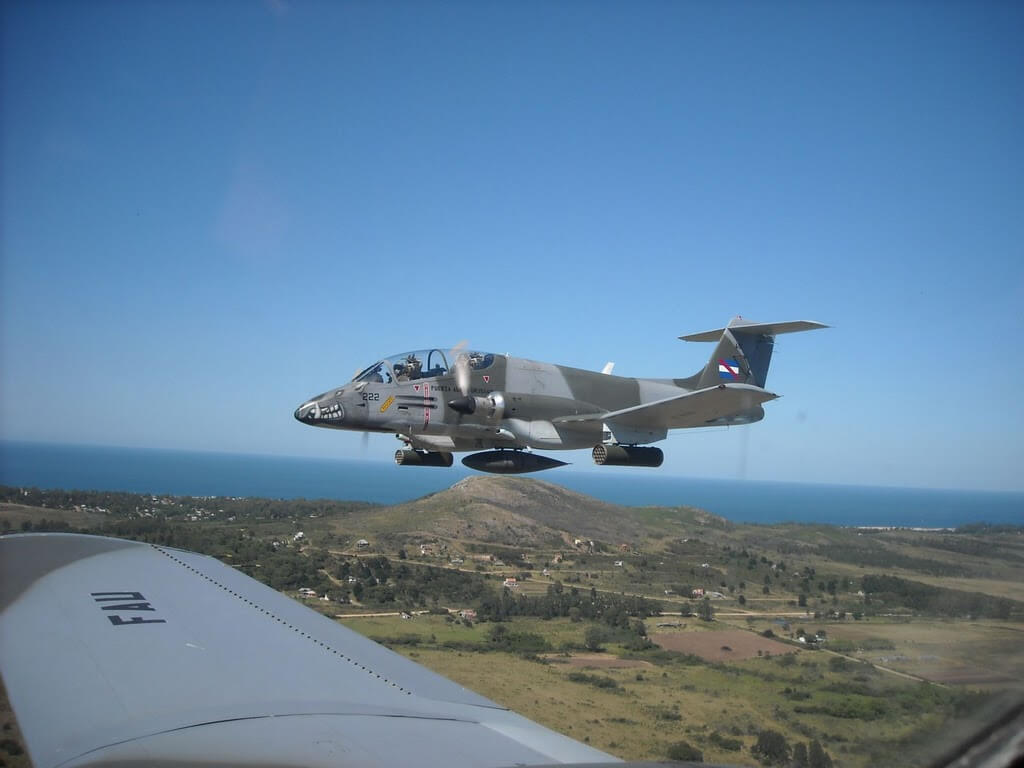
The fixed internal armament is composed of four Browning M2 7.62 mm machine guns (ideal for ground troop strafing) always loaded with 900 rounds of ammunition. For larger targets two Hispano Suiza HS-DCA804 20mm cannons are ventrally installed and loaded with 270 rounds of high explosive (HE) and armor piercing (AP) ammunition, fitted with either time or proximity fuses.

To that effect Direct Air Support exercises are carried out with Uruguayan Army tank regiments and battalions, simulating armor piercing strafing runs. Both types of rounds are always loaded in the aircraft gun bays forming part of the aircraft basic weight. Furthermore the 7.62 mm guns can be cocked in-flight via a nitrogen activated pneumatic system, thus the aircraft can go from a training mission to a fight without landing.
Three hardened points are available for carrying combinations of extra fuel or weapons: one ventral (AERO 7A-1) for up to 2200 lb (1000 kg) and one under each wing (AERO 20A-1) carrying up to 1100 lb (500 kg) of stores, totaling 4400 lb (2000 kg). Incendiary INC-220 kg (500 lb) and US manufactured MK81, MK82 Snakeye (250 and 500 lbs. respectively) bombs – the latter with retardant tail – are available.

FFAR (Folding Fin Aerial Rockets) can be used from LAU 68 (Launcher Unit) carrying 7 x 2.75-inch (70mm) rockets and the larger capacity LAU 130 (19 tube x 2.75 inch rockets) as well as the smaller argentine ARM-657-A Mamboretá (6 tube x 2.25-inch Áspid rockets) are available. To boost the ordnance delivery capabilities, the hardened points can be fitted with MER and TER units (Multiple/Triple Ejector Racks). A 220 lb (100 kg) MER can be fitted with six 250 lb (125 kg) bombs and the smaller 110 lb (50 kg) TER could carry three 500 lb (250 kg) MK 82 bombs. A permutation of seven LAU 130 could be carried with a total load of 133 rockets. The SUU-25 flare dispenser carries target marking or pyrotechnic illuminating flares for recce/strike and CSAR (Combat SAR) missions providing top cover for Bell UH-1H and 212 helicopters of Escuadrón Aéreo no. 5 (Air Squadron 5). Live ordnance delivery training is carried out on the R7 bombing range, located at the Rincón del Bonete Lake (where FAU 225 was lost) 32 miles northeast and eight minutes flying time from Brigada 2. At this location there’s also a 2625 ft (800 mt.) grass runway to practice soft/short field landings as the Pucara can operate from an area slightly larger than football pitch. The type robustness is regularly put to a test on operations from unprepared, remote areas away from Base – an example being that the aircraft can reverse on the ground to back track as to utilize the full length of a field.


Upon buying the aircraft, before the heyday of GPS, the FAU requested the fitting of a Litton LTN 211-27 Omega Navigation System – operated from the rear seat – oddly to the last two aircraft delivered, namely FAU 224 and 225. A Firing Programmer, which allows the launching of bombs and rockets at preselected time intervals and a radar were rejected thus decreasing effectiveness of light aircraft interceptions and navigation back to base whilst operating from remote fields away from base.
The Omega equipment (heavy and slow to operate) was removed in 1984 to be fitted onto the FAU’s transport fleet destined to operate Uruguay’s first flights to its Antarctic Base at King George Island, South Shetlands. A more pressing matter due to the remote navigation required to the white continent, the Omega fitted on FAU 572, a Fairchild Hiller FH-227D belonging to the then Grupo 4 (at the time completing the first flight to Antarctica) and to FAU 532, a CASA C-212-200 from Grupo 3, assisting in the mission.

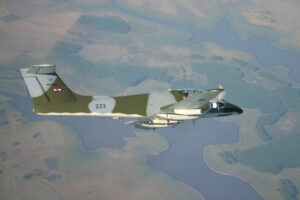
DEPLOYMENTS
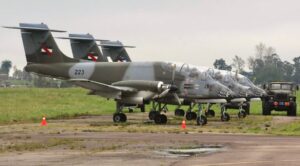
One week deployments are conducted to smaller paved aerodromes and unprepared grass fields like Fray Bentos, Salto (by the Uruguay River, contiguous to Argentina) San Gregorio de Polanco and the northern city of Rivera edging Brazil. The Squadron is self supported, away from base, via its own mobile Ops Room (a converted Russian field hospital) maintenance personnel and ground support equipment.

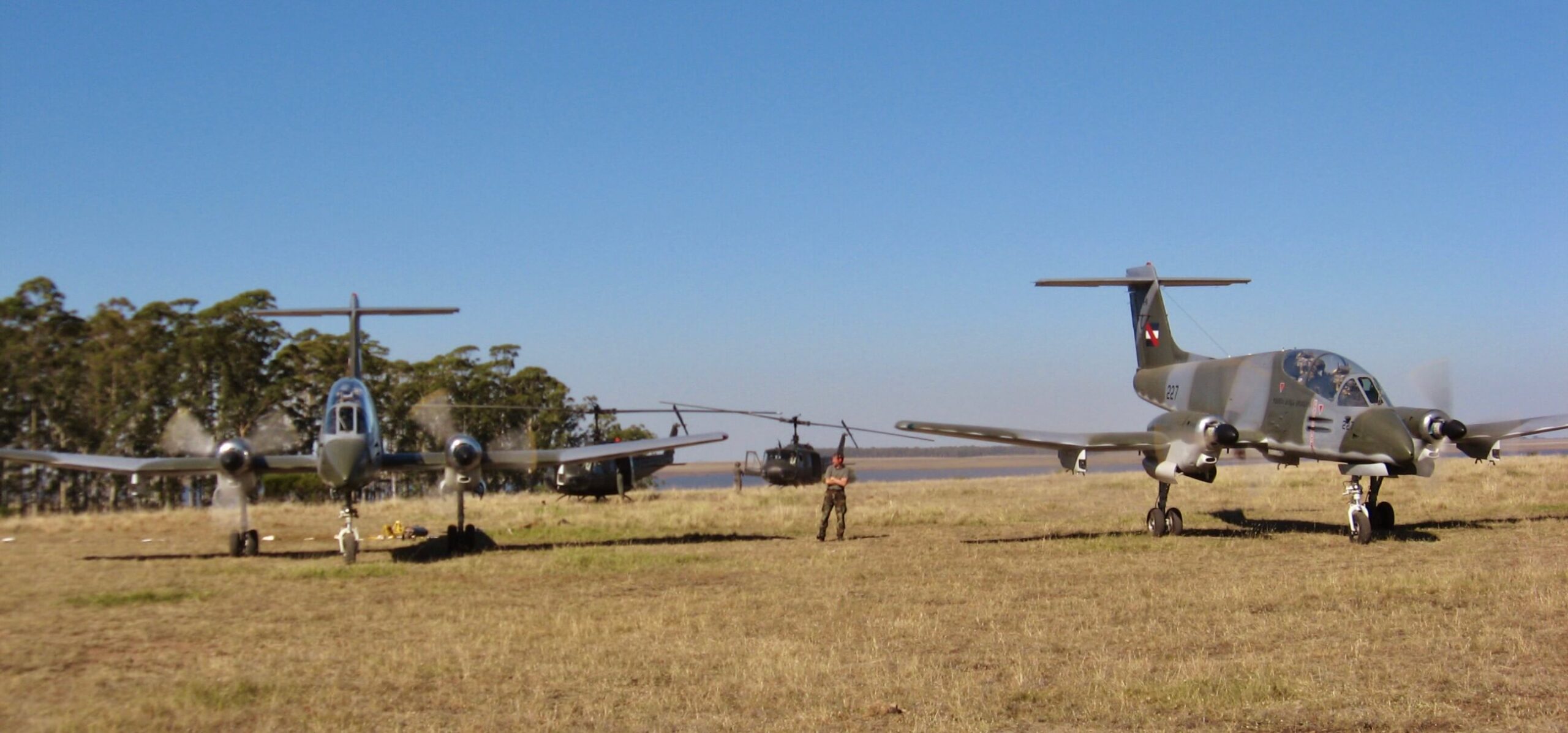

Fast reaction times to any part of Uruguay’s territory can be achieved due to the country’s small geographical dimension and lack of high elevations. Loaded with internal fuel, (286 Imp.Gal/1300 lt.) guns and cannon rounds (called C1B configuration) a Pucará can stay airborne at low level for four hours, operating at high power and at 240 knots on a 300 nm radius. A more emblematic (within the country’s borders) reaction time would be 23 min. to 90 nm at 240 knots. The range of airspeeds (98 to 405 knots) and configurations that the aircraft can be flown at maximum continuous power plus the low fuel consumption (97 Imp Gal/440 lt. /hour) from its two French built 1021 shp Turbomeca Astazou XVI-G engines makes it a versatile platform and if time on station becomes important up to 10 hours of endurance can be obtained previous installation of external fuel tanks.
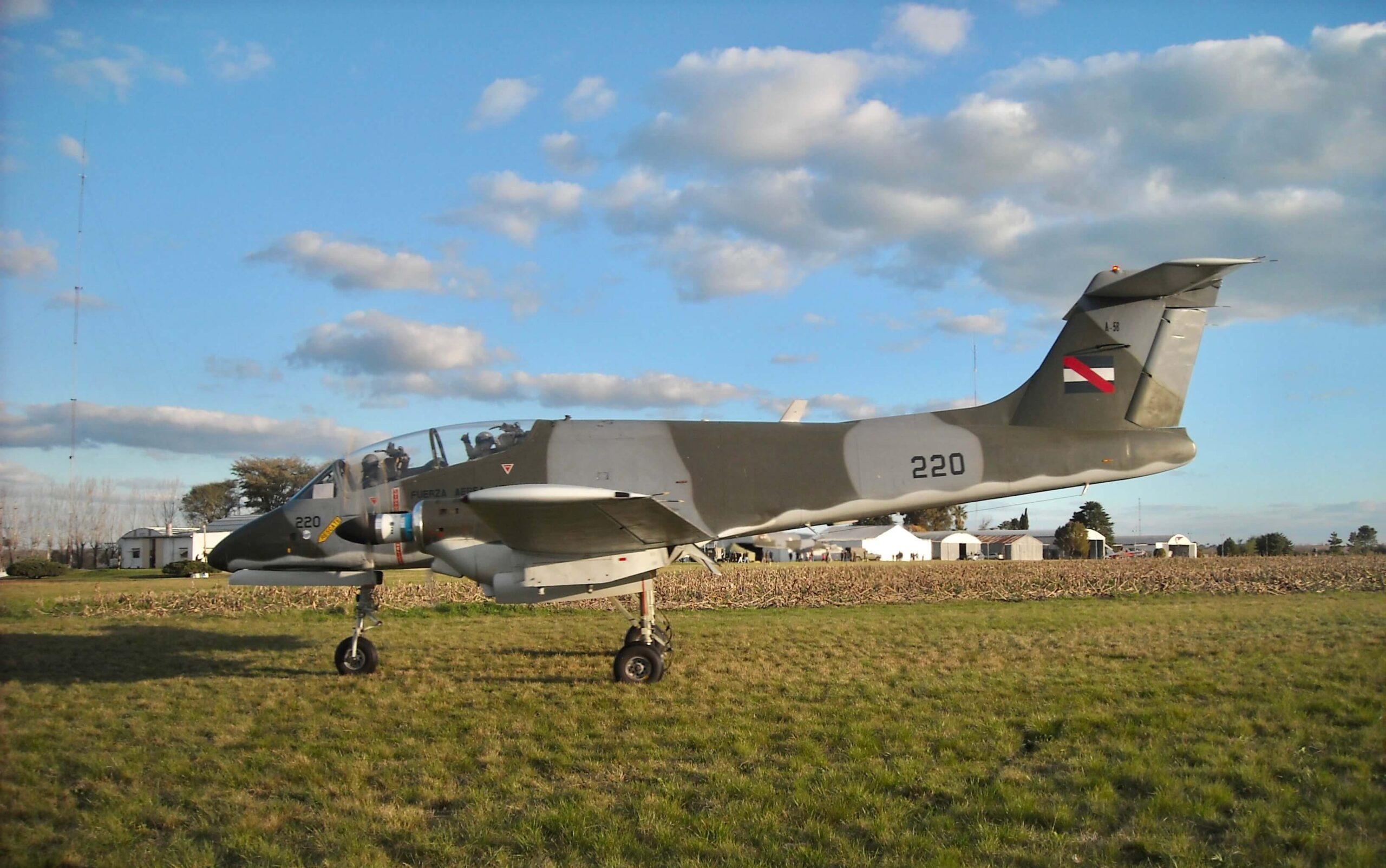
OVERSEAS OPERATIONS

The Squadron operational level has improved due to intense training carried out before its first international air exercise participation: Cruzex III, the largest ever held in South America, hosted by the Brazilian AF (FAB – Força Aérea Brasileira) during September 2006, when three A-58 deployed to Anápolis (Goiás State) Brazil.
FAU 220, 223 and 227 (fitted with ventral 70 Imp.Gal/318 lts ferry fuel tanks) completed the 1237 miles (2300 km) journey from Uruguay in six hours to Anápolis with stops in Asunción (Paraguay) and Campo Grande (Brazil). The deployment was supported by an Embraer EMB-120RT Brasilia (FAU 550) one EMB-110C Bandeirante (FAU 583) and CASA C-212-200 Aviocar (FAU 531) all from Escuadrón Aéreo 3 – Transporte (Air Squadron 3 – Transport). A total of 90.8 hours were flown (25% of the squadron allocated hours for 2006) including Composite Air operations (COMAO) for Large Force Employment (LFE) were planned and conducted to NATO standards – alongside personnel and 97 aircraft the air forces of Argentina, Brazil, Chile, France and Venezuela (Peruvian AF participation was scheduled, but a fatal accident on a A-37B at Porto Bello during the ferry flight from Peru, aborted their participation)
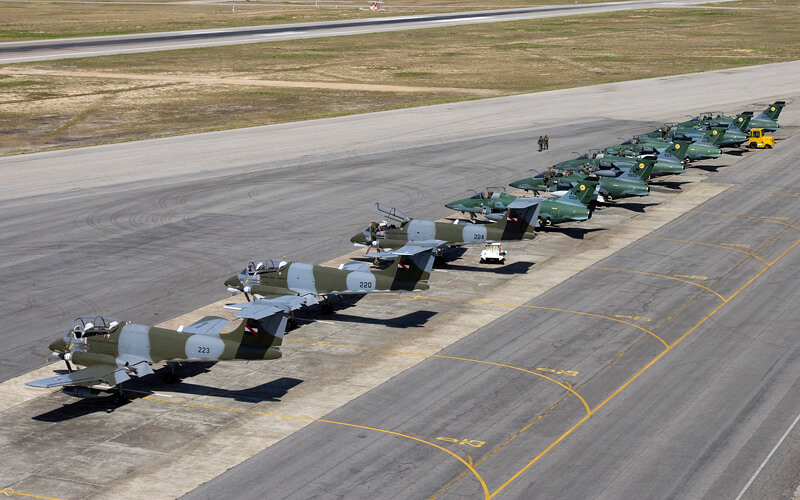
The experiences obtained overseas are tangible at home as CRUZEX style “Pack” strike missions are flown alongside armed Pilatus PC-7U from the EVA and FAU A-37B jets (the latter, also present on Cruzex). Avoid and escape Air Combat Manoeuvring (ACM) is also trained with the Dragonfly. Pilots from both squadrons – very diplomatically – state that the encounters turn neutral with no clear winner. The A-58 with a tighter turning radius, seeks maneuvering on the horizontal and the faster A-37B tends to climb, operating on a vertical plane and dive into the Pucara’s “six”. Air- to-air (AA) gunnery was first carried out on the year 2000, whilst EA1 pilots deployed with Pucaras of the Argentine AF Grupo 3, to Mar del Plata, Buenos Aires Province.
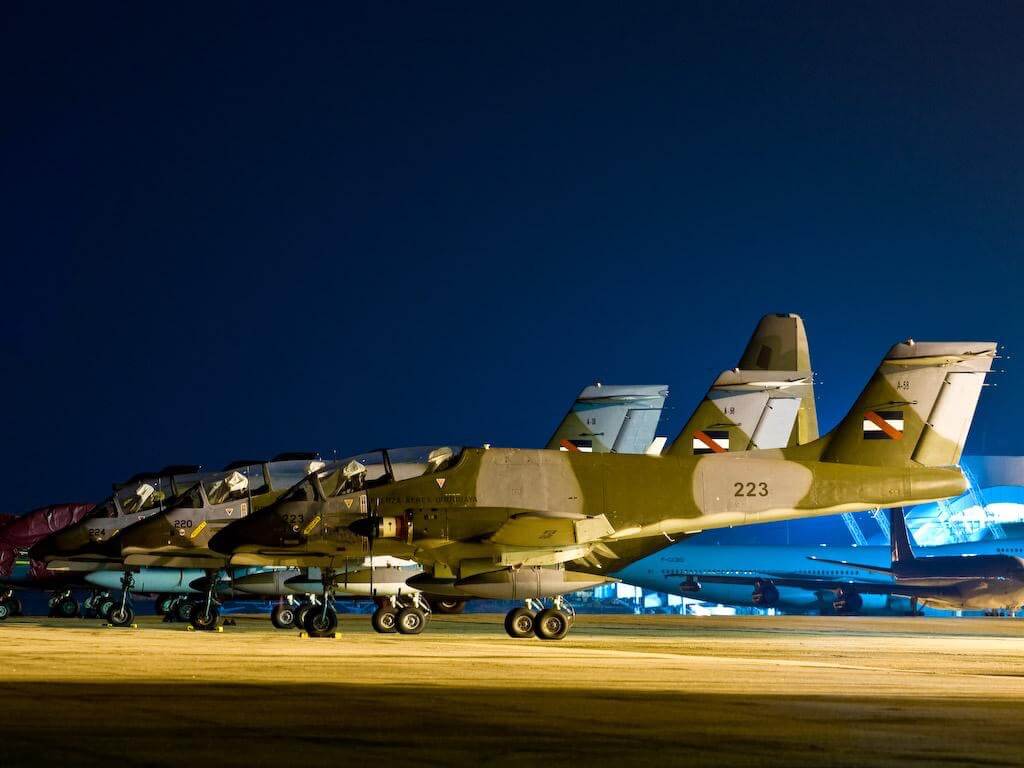
INTERCEPTIONS
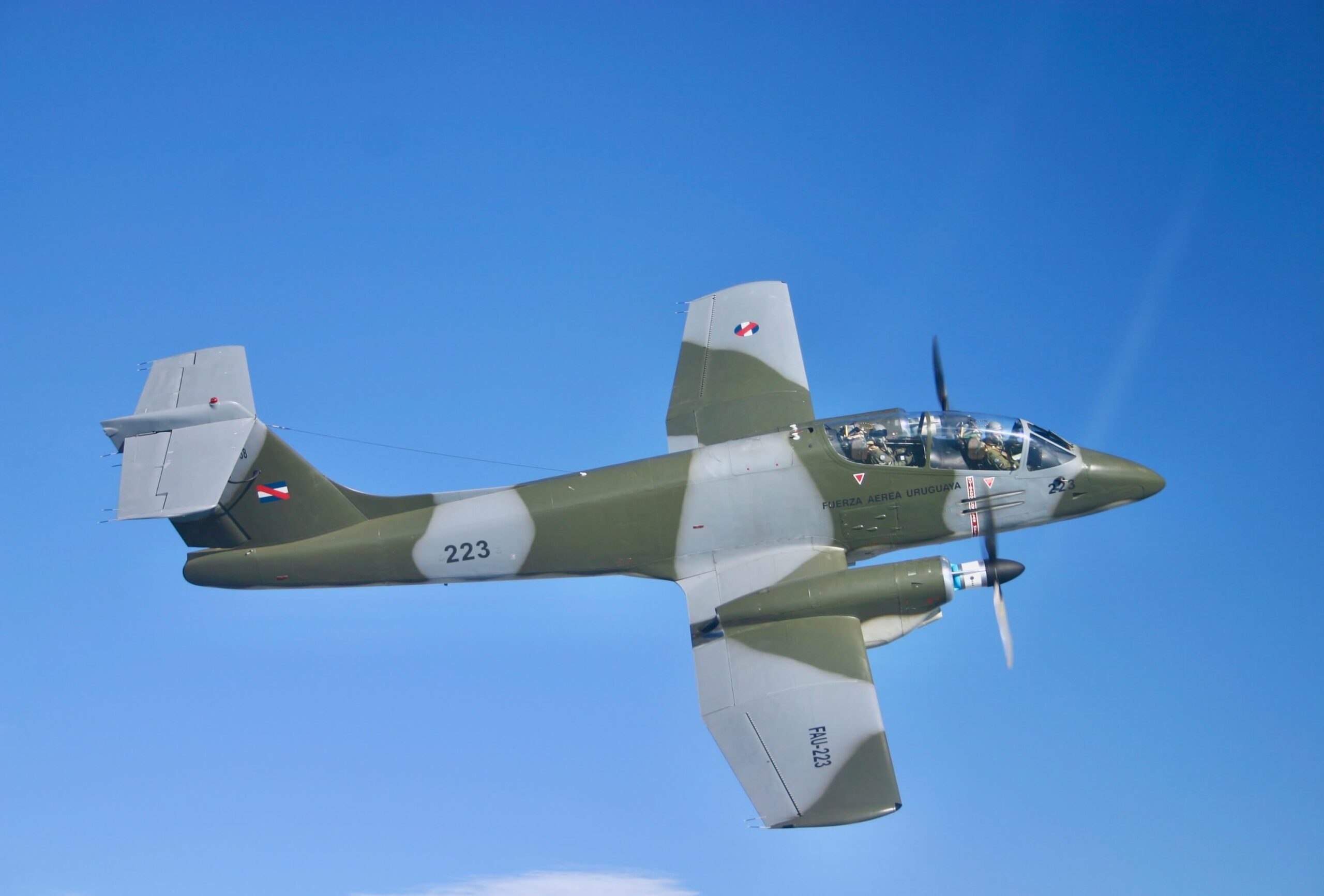

Further to the CRUZEX deployment the EA1 regularly conducts air interception exercises with Argentina (named RIO) and Brazil (URUBRA) when each nation’s aircraft intercepts, identifies and hands over “illegal” flights over their territory and escorts and advises its neighboring air force to escort and/or take relevant action.
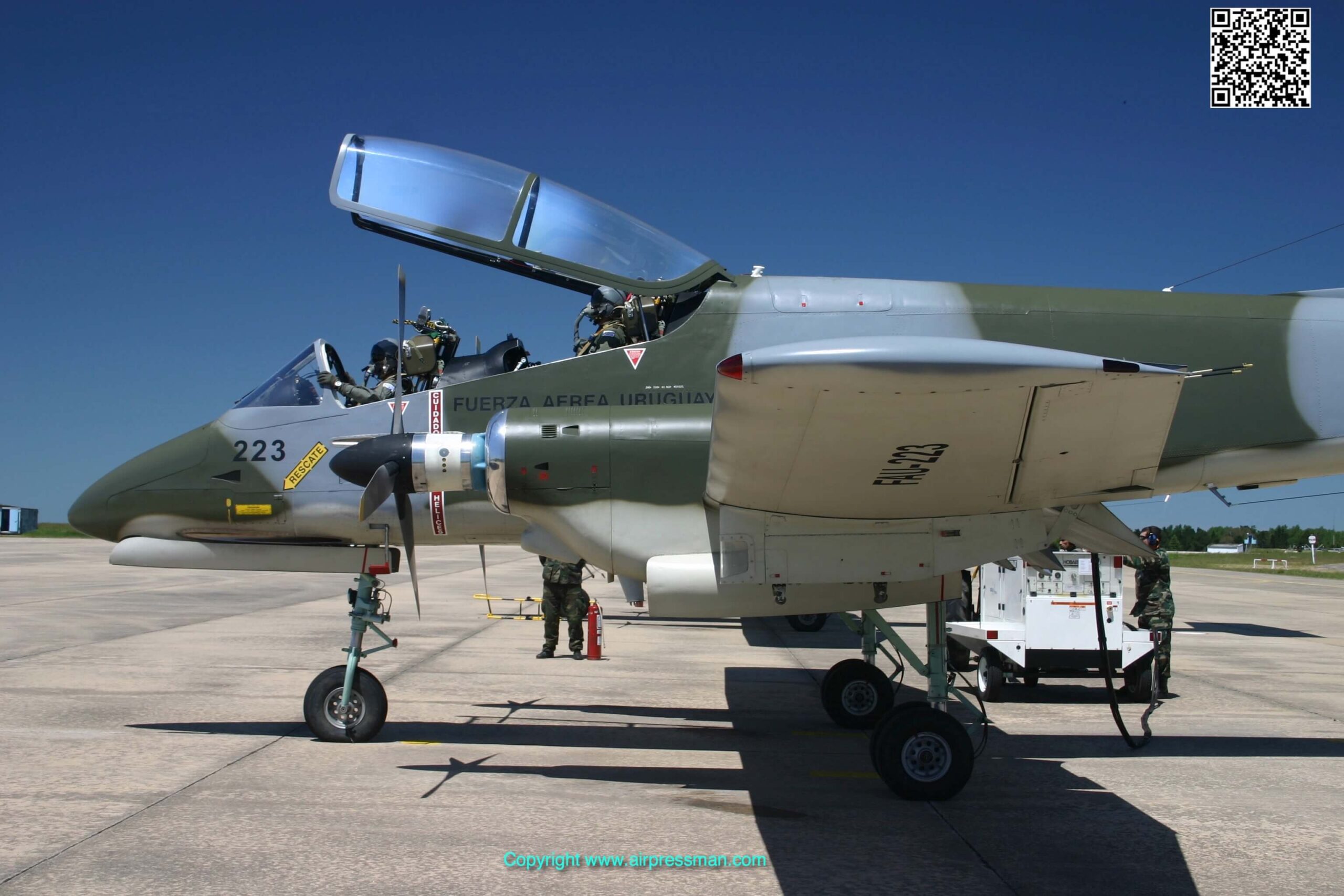
MAINTENANCE
The aircraft are in great shape, with most maintenance carried out at the EA1 hangar in Durazno. The fleet was grounded from March 2004 until November 2005 due to expired ejection seat cartridges, and the difficulty of obtaining spares. Many necessary repairs and maintenance was accomplished during the grounded time. Squadron technical crews have extensive experience on the type and in several opportunities supported the Colombian Air Force (Fuerza Aérea Colombiana – FAC) in the operation of their three IA-58A, whilst backing from the factory FMA was unavailable during its privatisation process to Lockheed Martin.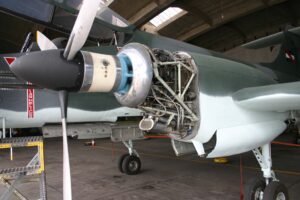 In accordance with the FAU trouble free experience with maintaining the Pucará, all mayor 1050 and 2100 hours airframe inspections, have been extended to 1200 and 2400 hours respectively and Turbomeca has stretched the TBO (Time between Overhaul) of the Astazou XVI-G engines – carried out by FMA/LMAASA – from 1200 hours to 1500 hours. The good availability and low fail index of the aircraft is demonstrated by one Pucará flying 64,2 hours on one month, a record amongst the FAU combat squadrons.
In accordance with the FAU trouble free experience with maintaining the Pucará, all mayor 1050 and 2100 hours airframe inspections, have been extended to 1200 and 2400 hours respectively and Turbomeca has stretched the TBO (Time between Overhaul) of the Astazou XVI-G engines – carried out by FMA/LMAASA – from 1200 hours to 1500 hours. The good availability and low fail index of the aircraft is demonstrated by one Pucará flying 64,2 hours on one month, a record amongst the FAU combat squadrons.

UPGRADES
The aircraft is in need of a cockpit update. Later modifications, done locally included a standby attitude indicator, a Mode C transponder and since 1994 GPS units (initially with Garmin 100, 95 and a detachable GARMIN Pilot III since 2002) with excellent results. During 2008 the installation of a clearer sound VHF/FM and military communication UHF system was approved. The original single COMM box fitted (no standby frequency can be selected) suffers from reliability/bad sound quality issues and it’s impractical on a busy airspace environment. Pilots operating at CRUZEX found it hard to monitor several ground and air frequencies at one time with this single box. Cockpit light adaptation for night vision goggles (NVG) operations was also completed, bringing the Pucará to the same level of operation readiness as the A-37Bs. It has been reported that FAU 227 – the only flying Pucará during late 2016, early 2017 – has been fitted with a Sandel SBN3500 primary navigation display, to improve pilot’s situational awareness.
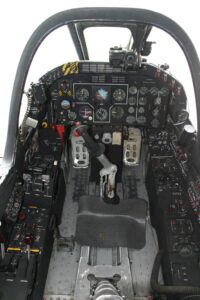

COLOMBIAN REINFORCEMENTS
During February 2008 high level contacts were carried out, to obtain spares and airframes from Colombia. The Fuerza Aérea Colombiana (FAC – Colombian Air Force) has three Pucaras, donated by Argentina in December 1989 to fight drug traffickers, and deactivated since 1998. A successful negotiation was achieved and in later 2008 three airframes, six engines and spare parts were obtained and flown to Durazno onboard a FAU C-130B Hercules. The FAU obtained the aircraft for free but in return agreed to provide ground training for FAC staff officers. The newly arrived spares meant having all five squadron aircraft airworthy, and EA1 squadron officers had the intention of possibly preparing a sixth aircraft, by refurbishing a Colombian airframe and cannibalizing parts from FAU 221 retired from service in 1999. Unfortunately it didn’t happen as the former FAC airframes suffered from a great deal of corrosion.
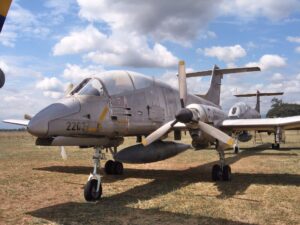

The larger fleet would then assist towards the goal for the eight squadron pilots to fly the minimum of 12 hours per month (850 hours per year) demanded by FAU doctrine and presently unachieved, allowing thorough training for all aircraft missions and capabilities. Presently, less experienced pilots are allocated 8-10 hours flying time per month, 5-6 hours to those with medium experience and 2-3 to higher ranking officers.
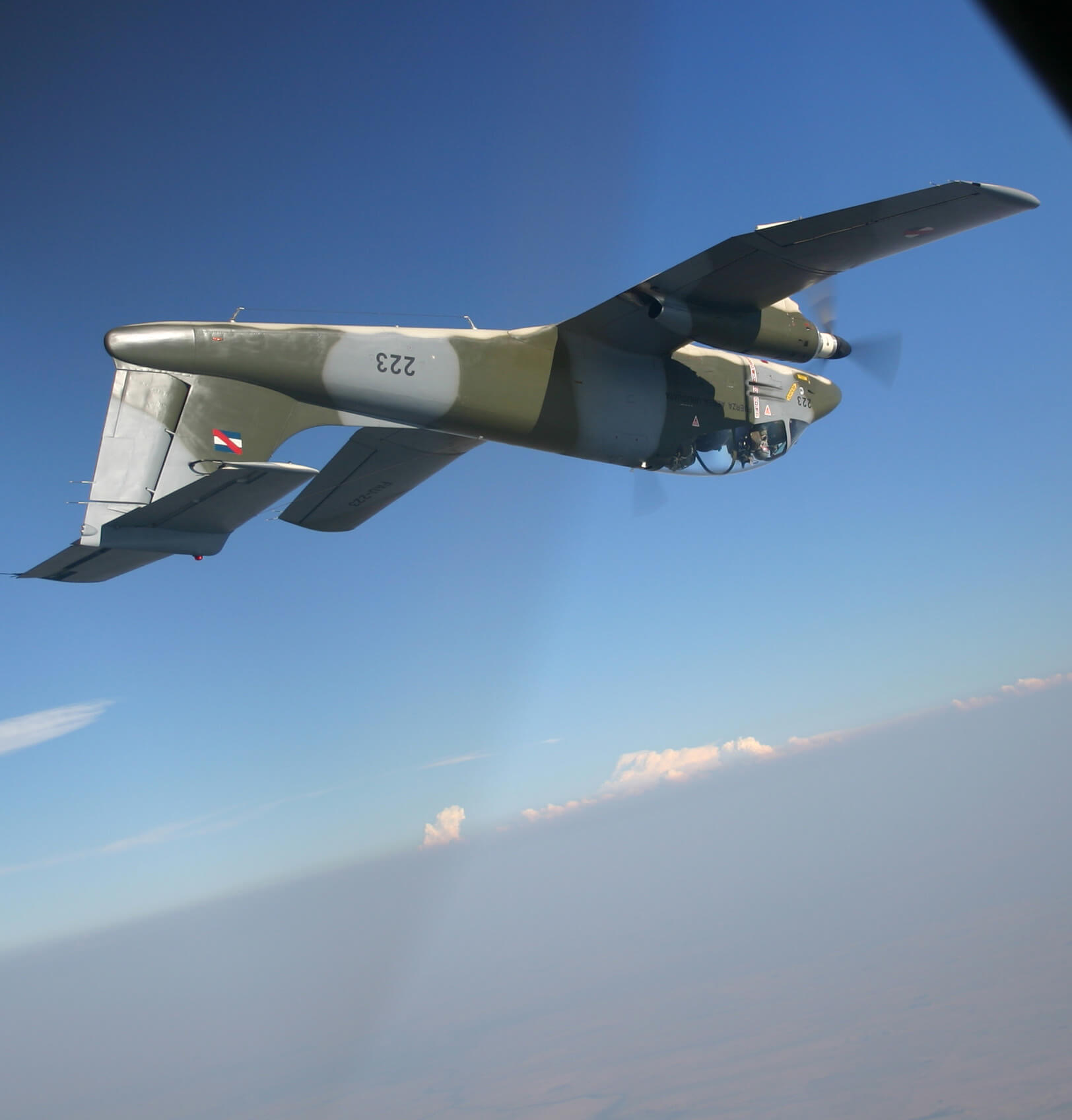
FAU sources state that the aircraft has no scheduled retirement date. All EA 1 pilots and ground crew show a true commitment to their Indian “fortress” and disliked unofficial reports, of a possible replacement by Embraer model EMB-314 known as A-29 Super Tucanos. The Pucará is a bit of a rarity as only Argentina and Uruguay operate the type, therefore EA 1 aircraft will possibly fly them as long as the Argentine AF – the main source of support and spares – keeps its large fleet in service. With non-extensive borders and few hypotheses for conflict the A-58 is perfect for the country geopolitical conditions. And with its new tasking of low performance aircraft interceptor, we could see this latter day “Mosquito” flying for many years to come in the southern skies. (* See Airpressman´s note below).
Copyright Ernesto Blanco Calcagno/airpressman.com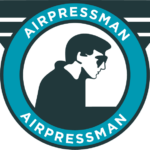
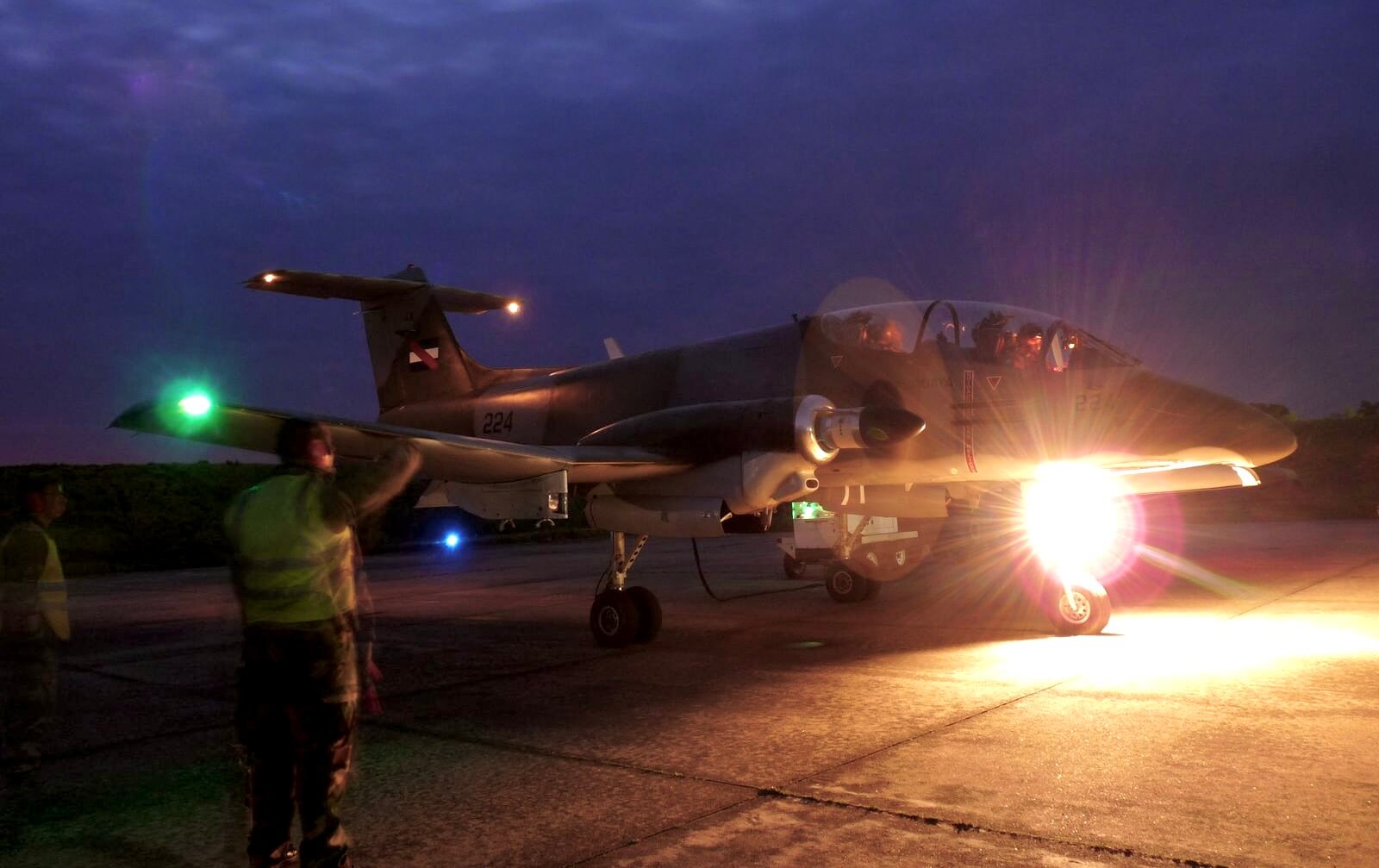
**Airpressman’s Note: After writing this feature, the Fuerza Aérea Uruguaya (FAU – Uruguayan Air Force) announced during mid-2016 that all Pucará aircraft were to be deactivated from March 17, 2017. We understand it became increasingly hard to obtain spare engines and parts, as the aircraft – and its engine – are not widely utilised anywhere in the world. The last IA-58A Pucará (FAU 227) flying had to stop service in early 2017 due to engine trouble. At time of writing (August 2024) a single Cessna A-37B “Dragonfly” attack jet is still operational (another veteran, obsolete aircraft that should no longer be flying as the logistic chain is extremely thin) attached to the Escuadrón Aéreo no. 2 (Air Squadron no. 2) also based in Durazno. Only a handful – usually a maximum of three aircraft – of Swiss built Pilatus PC-7 single engine turboprop armed trainers are available if needed.
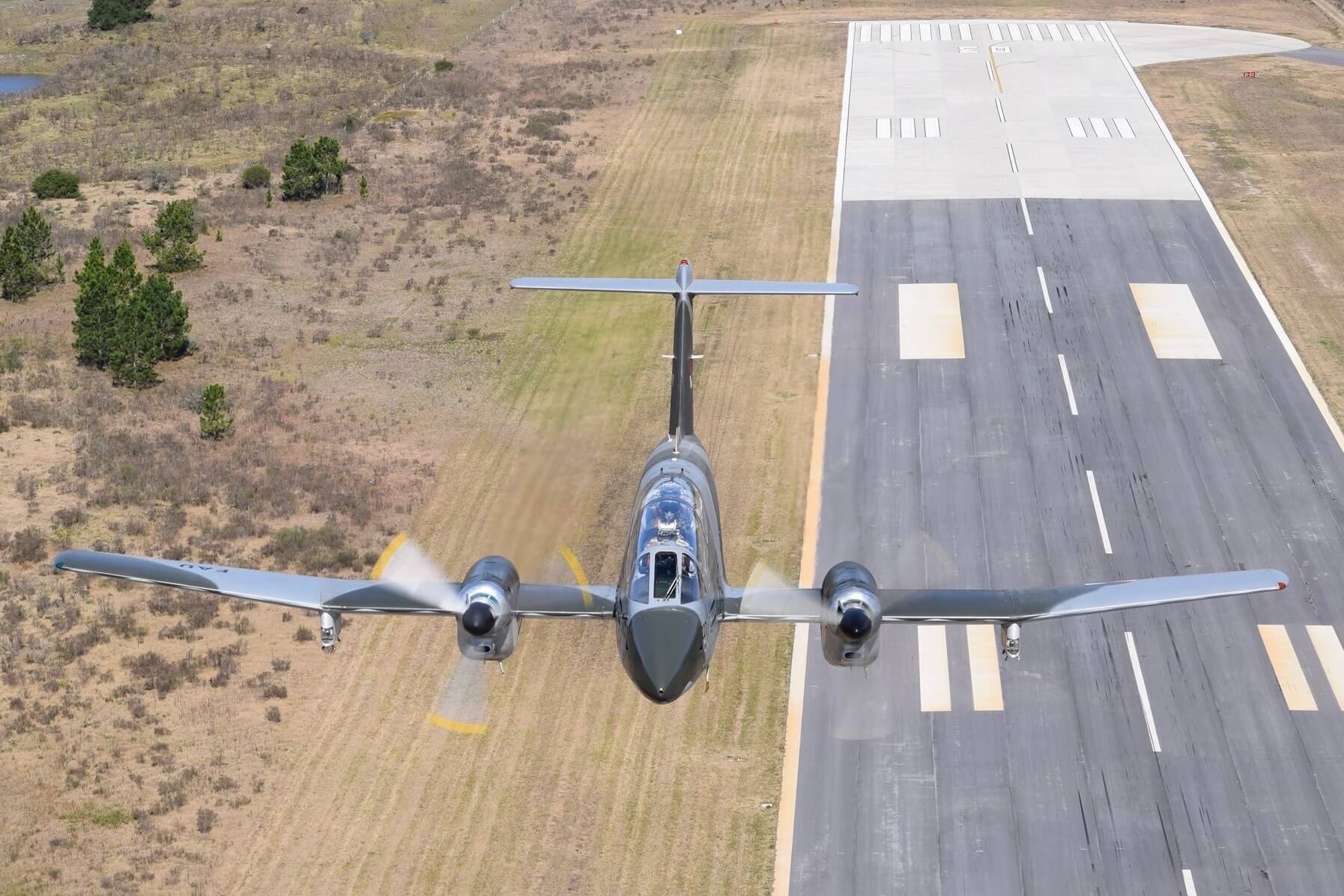
The poor situation of the nation’s combat aviation must be improved urgently. To do so the Uruguayan Ministry of Defense created a strategic plan for asset renewal – with a 2040 deadline – intending to achieve the necessary capabilities to meet national requirements. In this sense the acquisition of a Lead-In Fighter Trainer (LIFT) jet aircraft with weapons capability to be operated by a newly created combined fighter/attack squadron was decided as the best option. Two priorities were set, one that the aircraft should have an onboard radar and be transonic or faster. After careful analysis of several LIFT aircraft in the market, the preferred contenders were narrowed down to two 4th Generation fighters: the Korea Aerospace Industries (KAI) FA-50 – in first place due to its performance including being the only supersonic LIFT/LCA (Light Combat Aircraft) available at present time – followed by the Italian built Leonardo M-346FA. The latter is the armed version of the M-346 “Master” recently introduced as the aircraft to be operated in the future by the Italian Aerobatic Display Team, the “Frecce Tricolori” (Tri Coloured Arrows)
Based on the previous facts, no reactivation of Escuadrón 1 was ever planned and it is my personal view that a combined squadron with at least 10 jets would suffice for the nation’s needs. With all that said, the Uruguayan government signed a contract in August 2024 with brazilian manufacturer Embraer, to acquire six A-29 Super Tucano (model EMB-314) single engine turboprop light attack aircraft, in what is was seen as a political decision, as Uruguay seeks to improve trading relations with its giant northern neighbor. Being a superb multi role combat aircraft and with all its advanced features and capabilities, the A-29 is a step in the right direction – and would have been a suitable replacement for the Pucará – but is it not a air superiority fighter.
The FAU has calculated on a so called “success probability matrix”, that the interceptor should be able to fly at more than 30% of the top speed of the airplane being intercepted. With a top speed of 320 knots the nimble A-29 would do fine against present threats (light single and twin engined piston aircraft originating from neighboring countries) however due to its slower speed, the time required to intercept them would be longer. Furthermore, due to its lack of an onboard radar, the type is incapable of keeping a probable target under “Closed Control” (under radar contact) specially in areas were the two FAU Indra 3D radars cannot provide coverage (luckily few areas of the country are uncovered). Uruguay has a small geographical territory, dictating that interception tasks must be expeditiously carried out, not doing so will signify that the probable illicit aircraft will soon be outside of your airspace. The first two A-29 are expected to arrive in Uruguay during late 2025 with further batches of two aircraft to be delivered in 2026 and 2027. Once more a strange decision as it is understood that the aircraft are already built.
What it is not a well known fact is that Super Tucanos will be operated by Escuadrón Aéreo no. 2 – a fighter squadron without fighters – however is still unclear if the A-37B Dragonfly will be deactivated. The Super Tucano could suffice to confront the present dangers facing the nation – light single engine types entering the country mostly from Bolivia and Paraguay – however such actions might force the enemy to rethink their approach and adapt, like introducing faster jets to carry the drugs..hopefully then the politicians will make decisions based on sound advice provided by deep analysis carried out by Air Force personnel. At such time FAU commanders will need to generate a robust business case as to convince the next country administration to purchase an appropriate jet fighter for the needs of the nation!
ORDER OF BATTLE
Model FAU Reg. c/n Previous Reg In Service Since:
IA-58 220 043 – FAA A-542 15.5.81
” 222 044 – FAA A-543 14.7.81
” 223 045 – FAA A-544 19.8.81
” 224 048 – FAA A-547 23.9.81
” 227 106 – FAA A-605 14.6.99
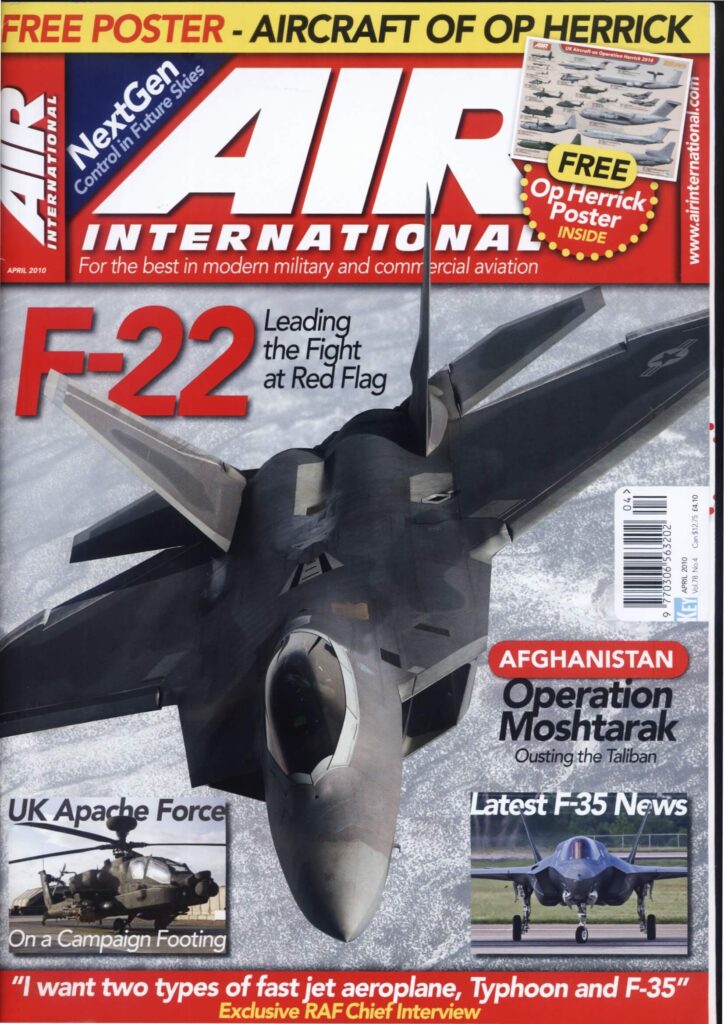
.png)
.png)
